Abstract
This study considers the sanitary significance of coliforms, fecal coliforms, and streptococci isolated from 152 species of plants and 40 samples of insects. These specimens were collected from various ecological environments and grouped into several categories. Results indicate that typical coliforms of the warm-blooded animal gut contribute a relatively small percentage of the organisms associated with vegetation (14.1%) and insects, (14.9%). A total of 1,203 coliform strains from vegetation and 1,084 coliform strains from insects were classified as to IMViC type and fecal coliform. No type was predominant in either the vegetation or insect groupings. The biochemical results for 646 streptococci from vegetation and 226 cultures from insects were reported. The predominant group, Streptococcus fecalis, as defined by Sherman criteria, constituted a majority of all strains from vegetation and insects. The “Completed Coliform Test” is recommended for the examination of plant and insect specimens to eliminate the many anaerobic and aerobic sporeforming bacteria that frequently produce false positive reactions by the “Confirmed Test” procedure. These findings support the current interpretation of the significance of the fecal coliform test for stream investigations or for surface water quality evaluations.
Full text
PDF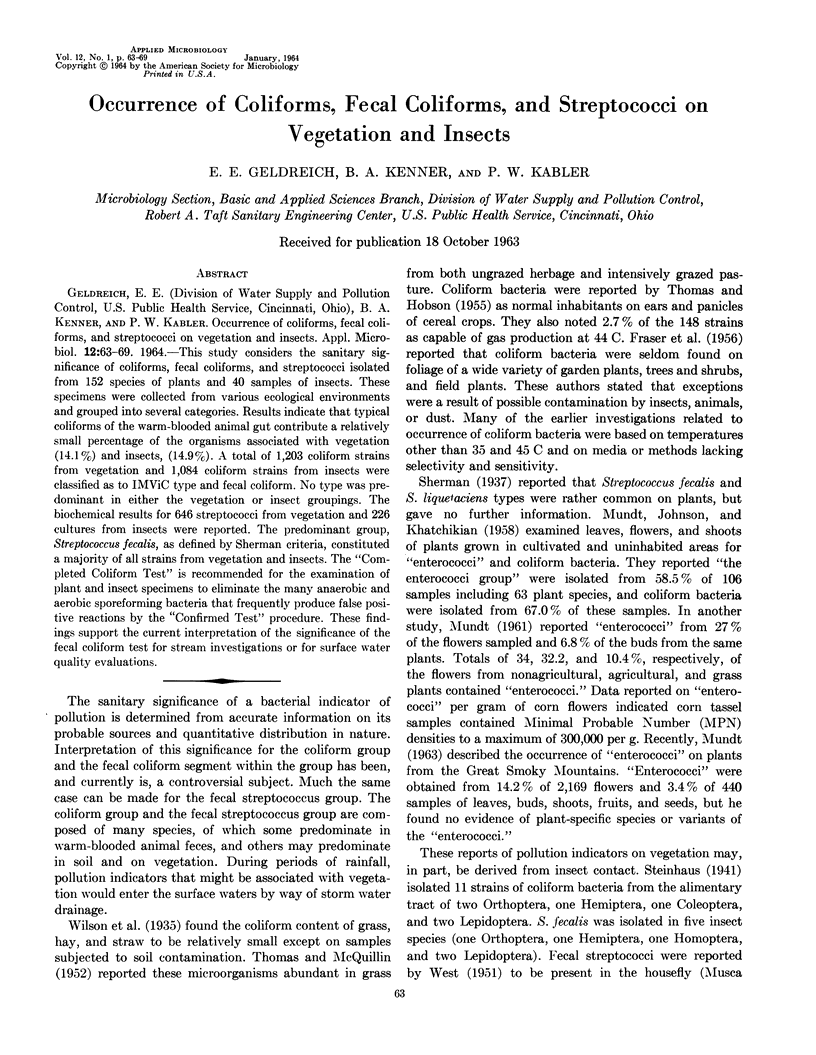
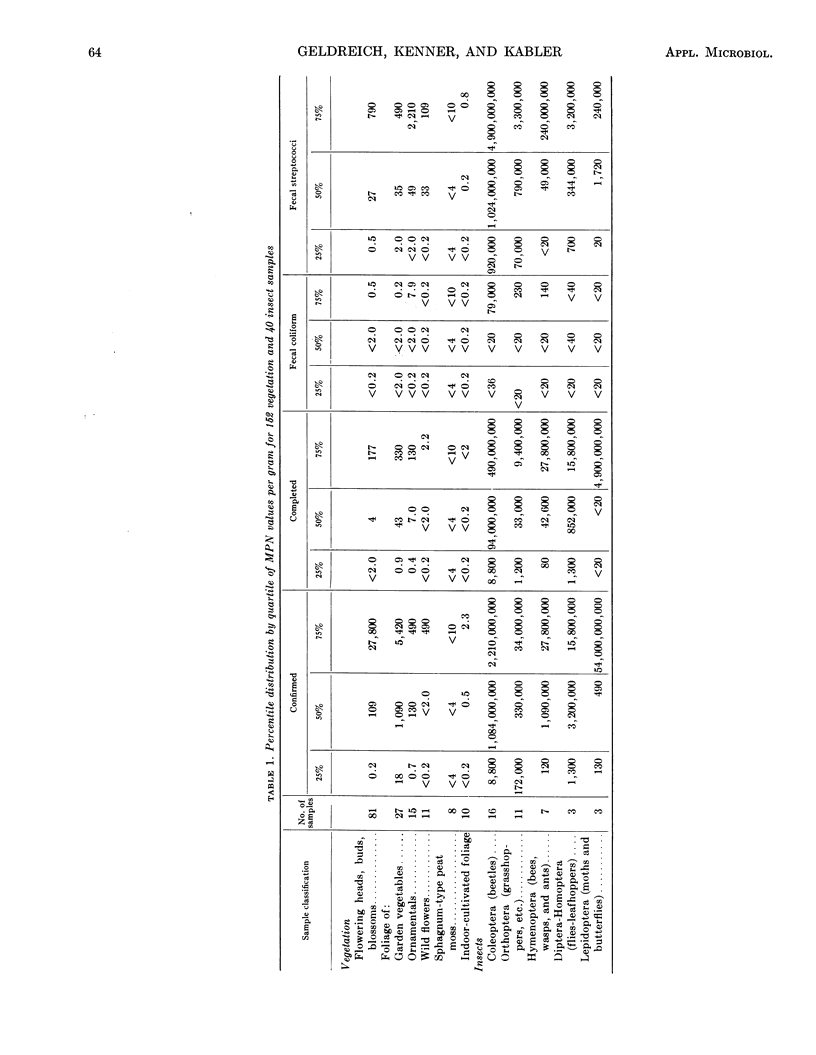
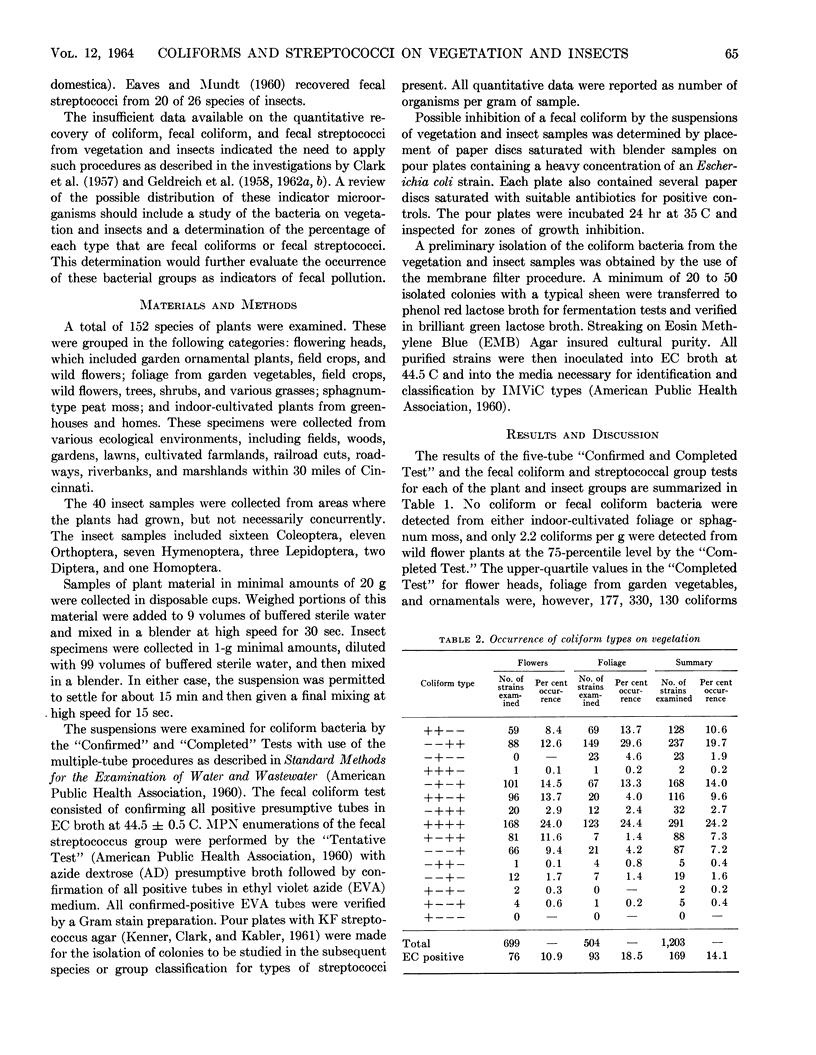
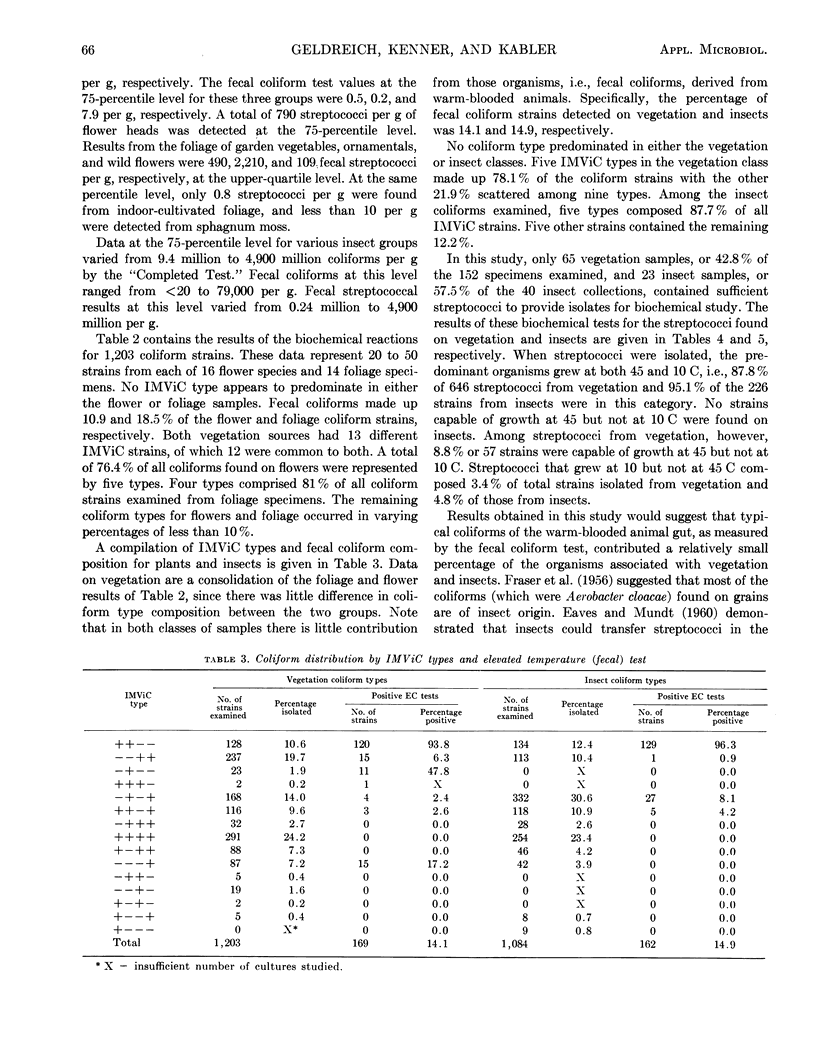
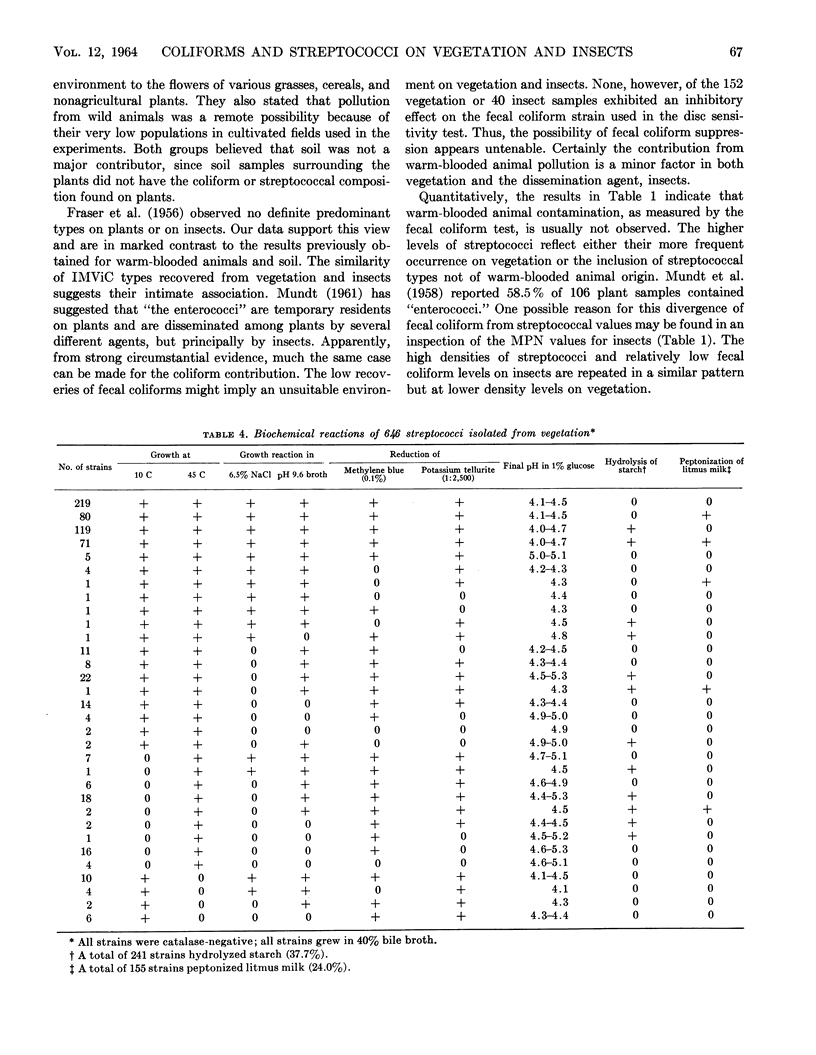
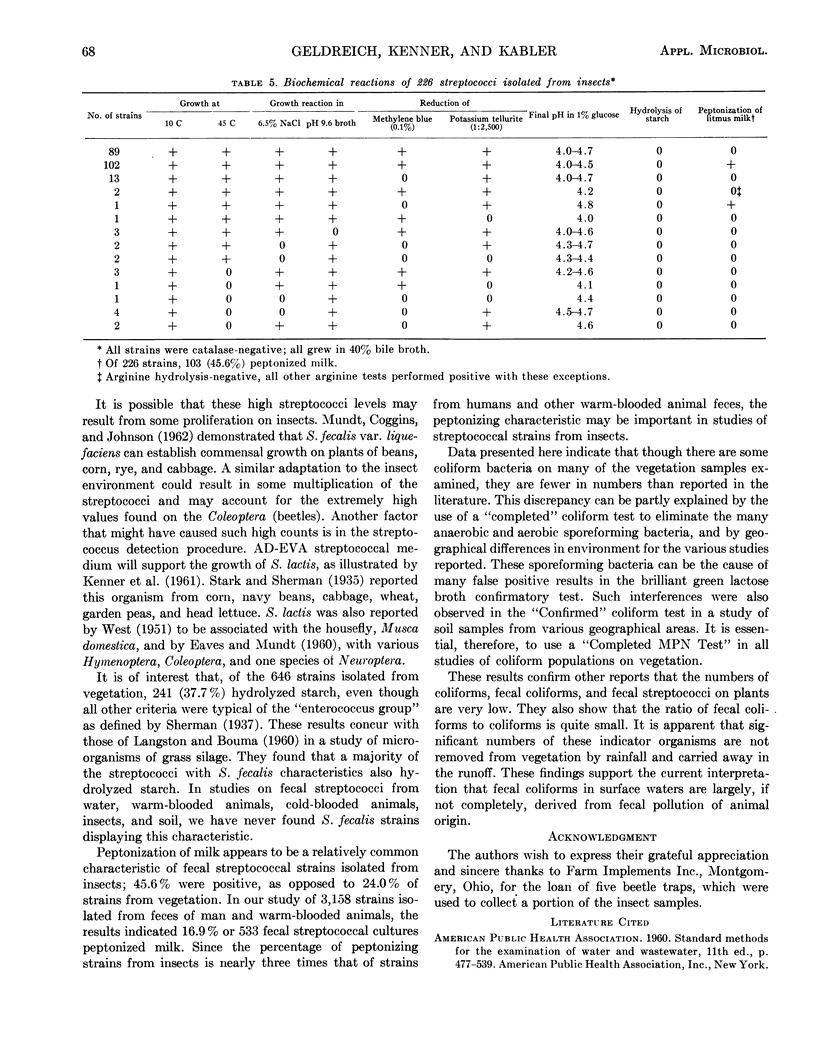
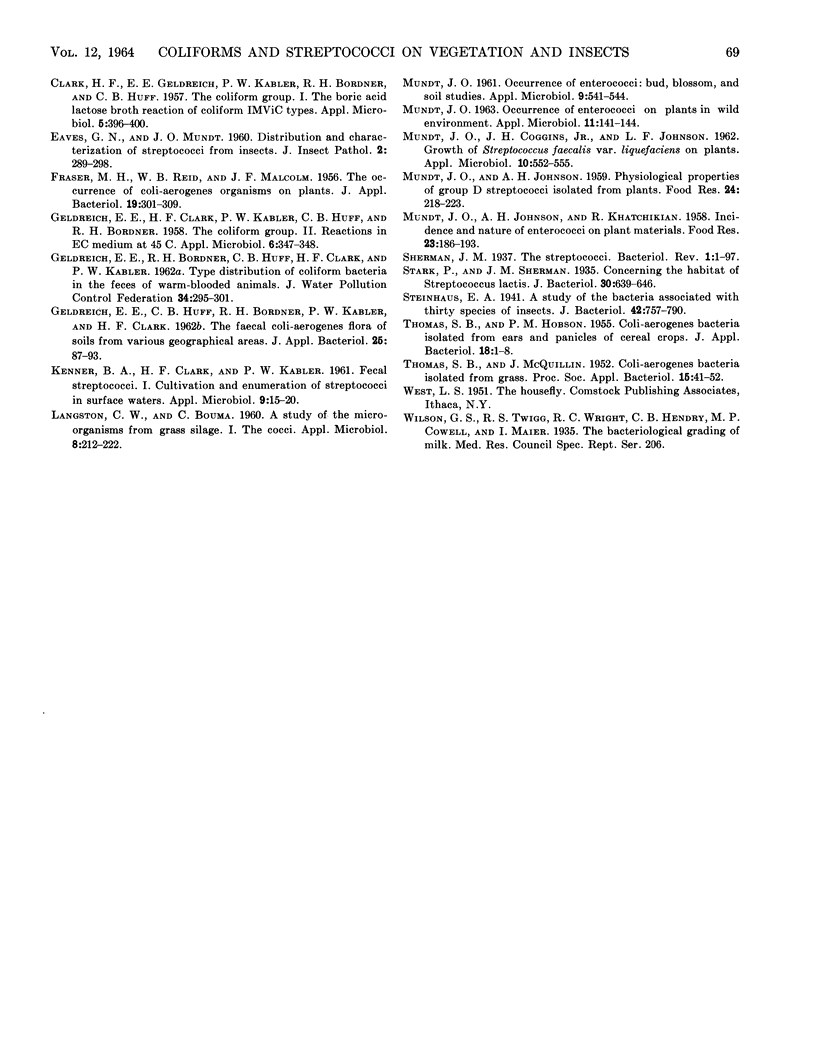
Selected References
These references are in PubMed. This may not be the complete list of references from this article.
- CLARK H. F., GELDREICH E. E., KABLER P. W., BORDNER R. H., HUFF C. B. The coliform group. I. The boric acid lactose broth reaction of coliform IMViC types. Appl Microbiol. 1957 Nov;5(6):396–400. doi: 10.1128/am.5.6.396-400.1957. [DOI] [PMC free article] [PubMed] [Google Scholar]
- GELDREICH E. E., CLARK H. F., KABLER P. W., HUFF C. B., BORDNER R. H. [The coliform group. II. Reactions in EC medium at 45 C]. Appl Microbiol. 1958 Sep;6(5):347–348. doi: 10.1128/am.6.5.347-348.1958. [DOI] [PMC free article] [PubMed] [Google Scholar]
- KENNER B. A., CLARK H. F., KABLER P. W. Fecal Streptococci. I. Cultivation and enumeration of Streptococci in surface waters. Appl Microbiol. 1961 Jan;9:15–20. doi: 10.1128/am.9.1.15-20.1961. [DOI] [PMC free article] [PubMed] [Google Scholar]
- LANGSTON C. W., BOUMA C. A study of the microorganisms from grass silage. I. The cocci. Appl Microbiol. 1960 Jul;8:212–222. doi: 10.1128/am.8.4.212-222.1960. [DOI] [PMC free article] [PubMed] [Google Scholar]
- MUNDT J. O., COGGIN J. H., Jr, JOHNSON L. F. Growth of Streptococcus faecalis var. liquefaciens on plants. Appl Microbiol. 1962 Nov;10:552–555. doi: 10.1128/am.10.6.552-555.1962. [DOI] [PMC free article] [PubMed] [Google Scholar]
- MUNDT J. O. Occurrence of enterococci on plants in a wild environment. Appl Microbiol. 1963 Mar;11:141–144. doi: 10.1128/am.11.2.141-144.1963. [DOI] [PMC free article] [PubMed] [Google Scholar]
- Mundt J. O. Occurrence of Enterococci: Bud, Blossom, and Soil Studies. Appl Microbiol. 1961 Nov;9(6):541–544. doi: 10.1128/am.9.6.541-544.1961. [DOI] [PMC free article] [PubMed] [Google Scholar]
- Sherman J. M. THE STREPTOCOCCI. Bacteriol Rev. 1937 Dec;1(1):3–97. doi: 10.1128/br.1.1.3-97.1937. [DOI] [PMC free article] [PubMed] [Google Scholar]
- Stark P., Sherman J. M. Concerning the Habitat of Streptococcus lactis. J Bacteriol. 1935 Dec;30(6):639–646. doi: 10.1128/jb.30.6.639-646.1935. [DOI] [PMC free article] [PubMed] [Google Scholar]
- Steinhaus E. A. A Study of the Bacteria Associated with Thirty Species of Insects. J Bacteriol. 1941 Dec;42(6):757–790. doi: 10.1128/jb.42.6.757-790.1941. [DOI] [PMC free article] [PubMed] [Google Scholar]


